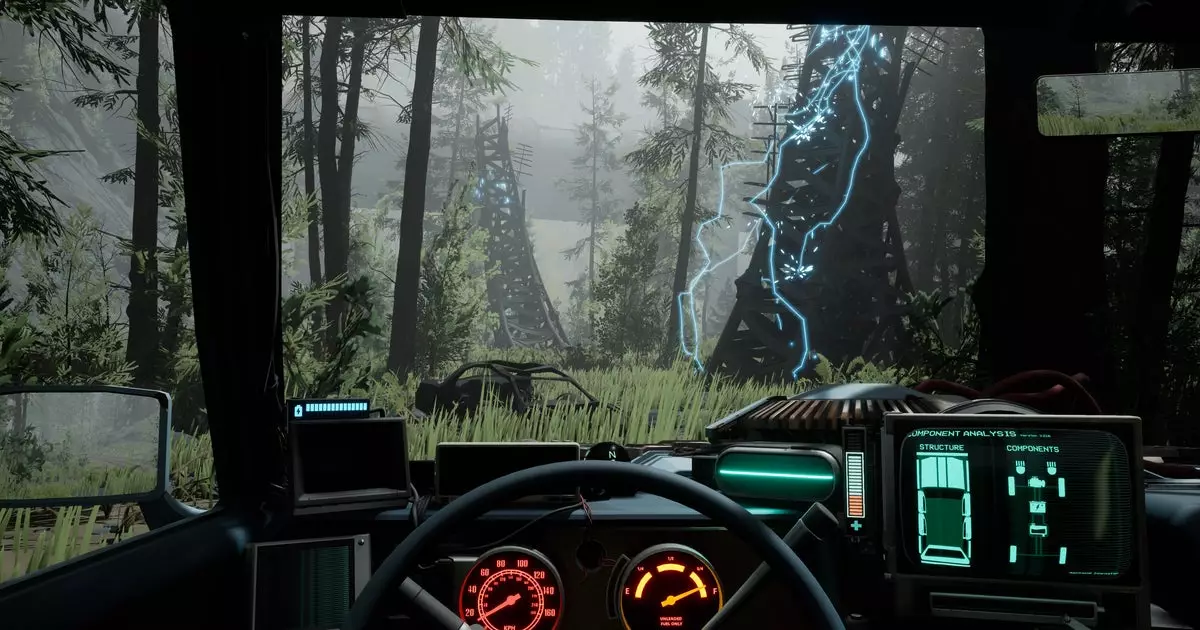Pacific Drive is a unique blend of survival horror and driving mechanics that plunges players into a haunting yet thrilling world. The game captivates players with its atmospheric setting, where the player must endure an endless expanse filled with mystique and peril. In this bizarre gaming landscape, the protagonist navigates using a dilapidated station wagon that requires constant attention to survive the harsh environment. While the game’s immersive storyline and mechanics are praiseworthy, a common critique has emerged regarding the incessant need for crafting and repairs, which can sometimes feel overwhelming.
Ironwood Studios, the brains behind Pacific Drive, has acknowledged this sentiment, leading to a significant update that aims to provide a more flexible gameplay experience. By introducing various difficulty options, they allow players to tailor their experience based on their preferences and skill levels. This pivotal change acknowledges that not everyone relishes the repetitive grind of item collection and crafting. Some players might seek a more relaxed experience, while others crave the adrenaline rush of a challenge.
The update presents several new difficulty presets that cater to a wide range of player desires. For those who felt burdened by the game’s crafting demands, the “Scenic Drive” option offers a gentler experience, reducing crafting requirements and even eliminating the fear of death, allowing players to explore the game freely without the looming threat of failure. This mode stands in stark contrast to the more punishing presets, such as “Olympic Gauntlet,” which amplifies the risks associated with gameplay—bolstering crafting needs, increasing car damage, and introducing endless hazards.
One of the standout features of this update is the introduction of customizable difficulty sliders that let players adjust nearly every aspect of the game mechanics. This unprecedented level of personalization empowers players to shape their journey through the Pacific Drive universe. Whether a player wishes for flatter tires, intensified radiation, or even the ability to turn off instability storms, the choices available are compelling. This adaptability signifies an understanding that gaming experiences should not be monolithic; player preferences vary greatly, and accommodating individual choices is essential.
Moreover, the option called “Trunk Bonk kills” adds a comical yet intriguing twist to the survival factor. It reflects the developers’ ability to inject humor into an otherwise tense environment, reminding players that danger can lurk in mundane actions. This whimsical touch provides a reminder that gaming is also about enjoyment, not just survival.
The Pacific Drive update further enhances immersion by allowing players to integrate their own music into the game. This feature underscores the game’s inherent rhythm and vibe, granting players the freedom to curate their soundtrack, thereby enhancing their emotional engagement with the gameplay. The ability to load personal music files into the game draws parallels with other titles that prioritize player immersion, highlighting the importance of atmospheric soundscapes in modern games.
In reflecting on Pacific Drive’s crafting dilemmas, players are often divided between enjoying the hands-on mechanics and feeling bogged down by them. This delicate balance between engagement and tedium is a common challenge in game design. Ironwood Studios’ decision to empower players with the tools to modify their experiences enriches the overall context of the game, allowing for a more personalized journey.
Pacific Drive’s latest update represents a thoughtful response to player feedback. By offering various difficulty levels and customization options, Ironwood Studios has made significant strides toward creating a more player-centered experience. The inclusion of humor and personal music choices adds layers of engagement, enhancing the atmospheric elements that made the game compelling in the first place. For both novices and veteran players alike, the evolving landscape of Pacific Drive illustrates the importance of adaptability in game design, ultimately fostering an engaging and tailored gameplay experience that remains true to its roots while evolving to meet the players’ needs.


Leave a Reply